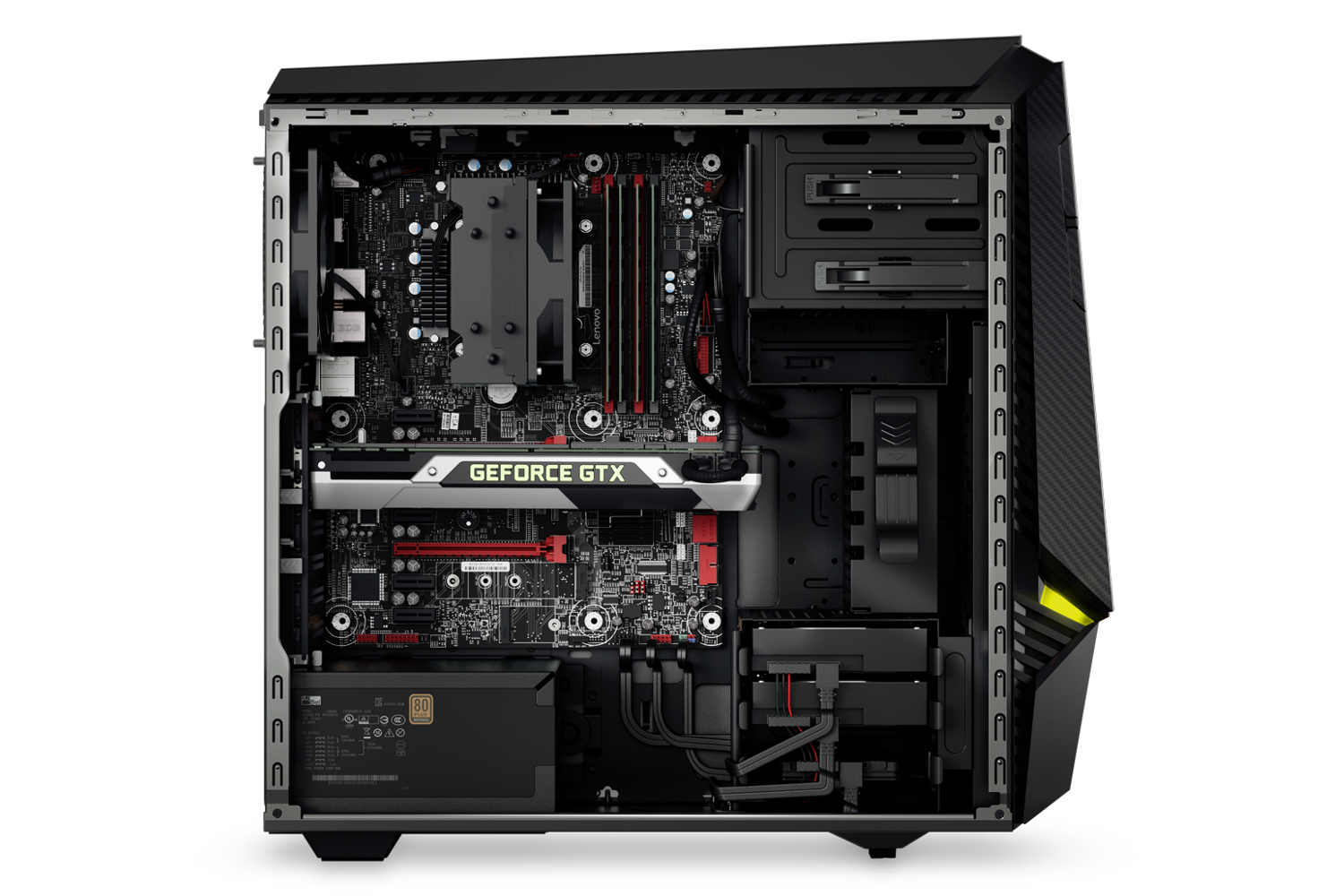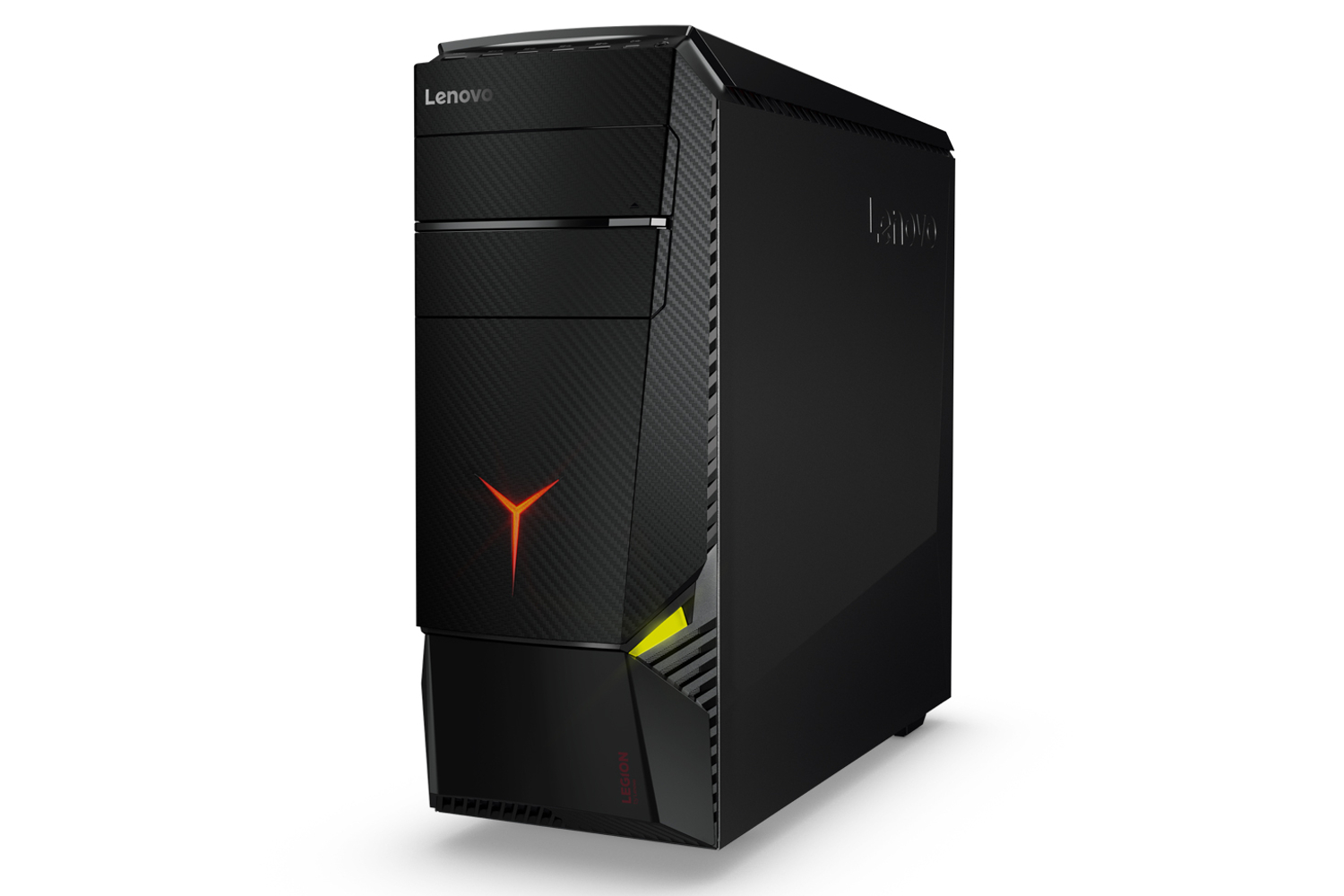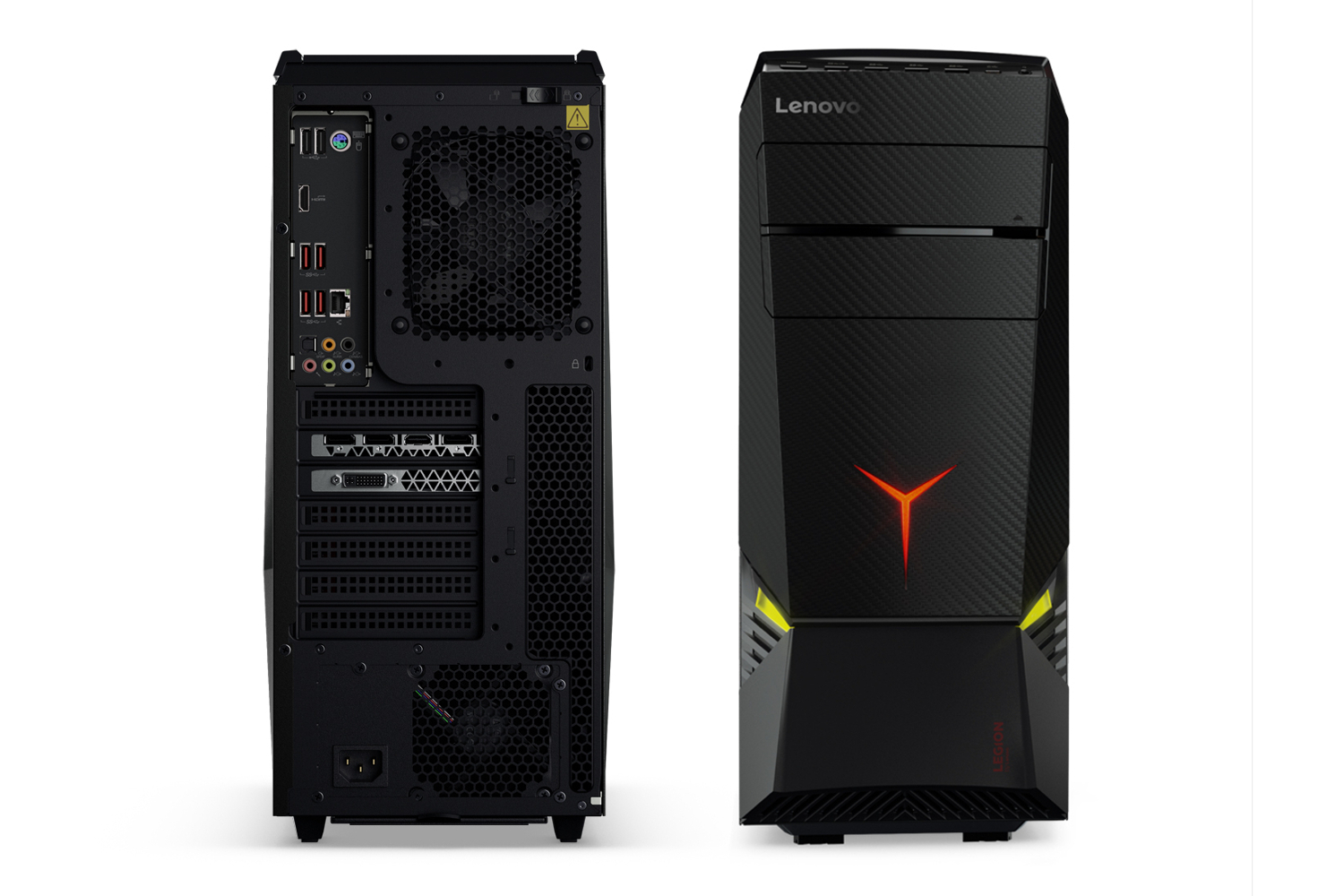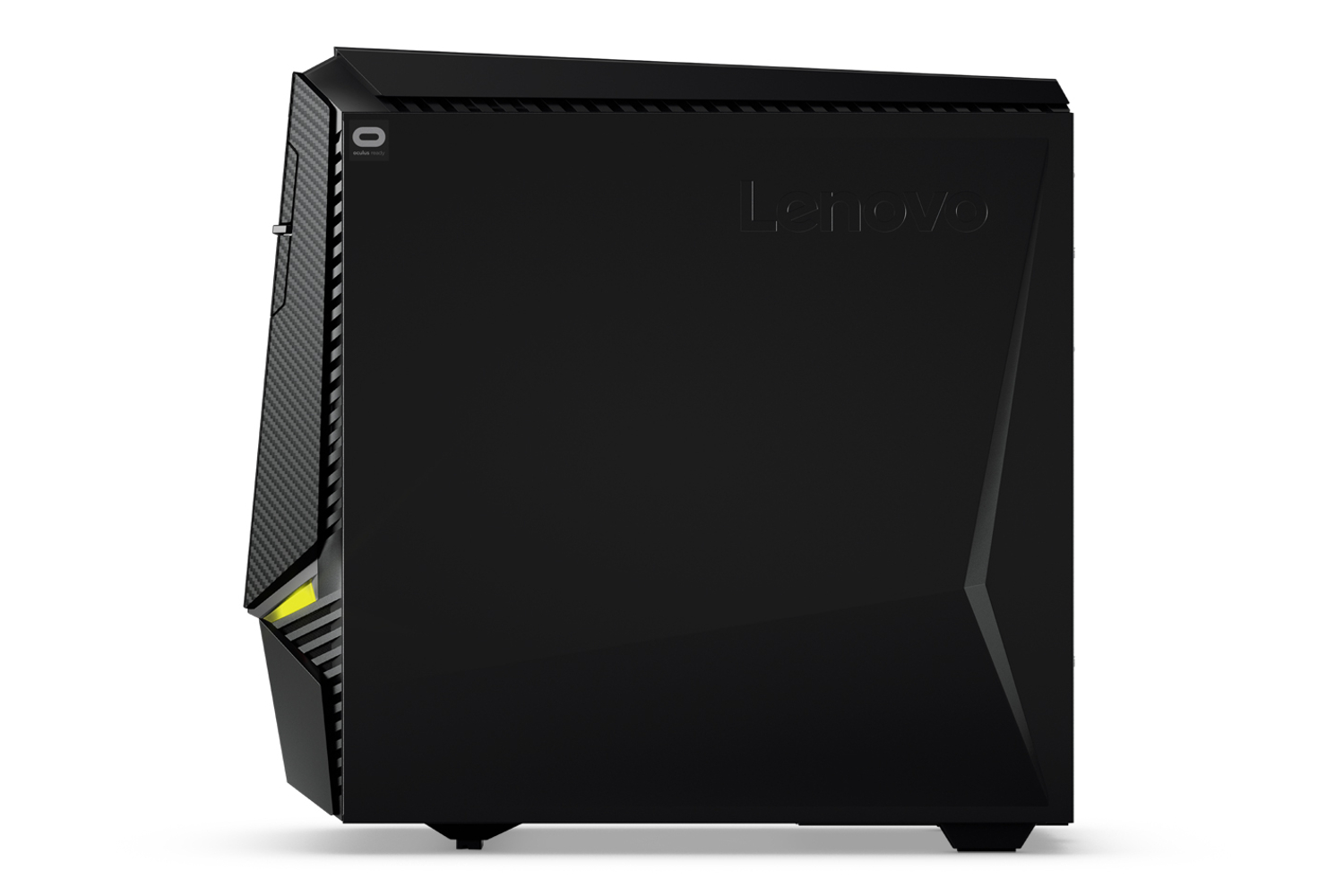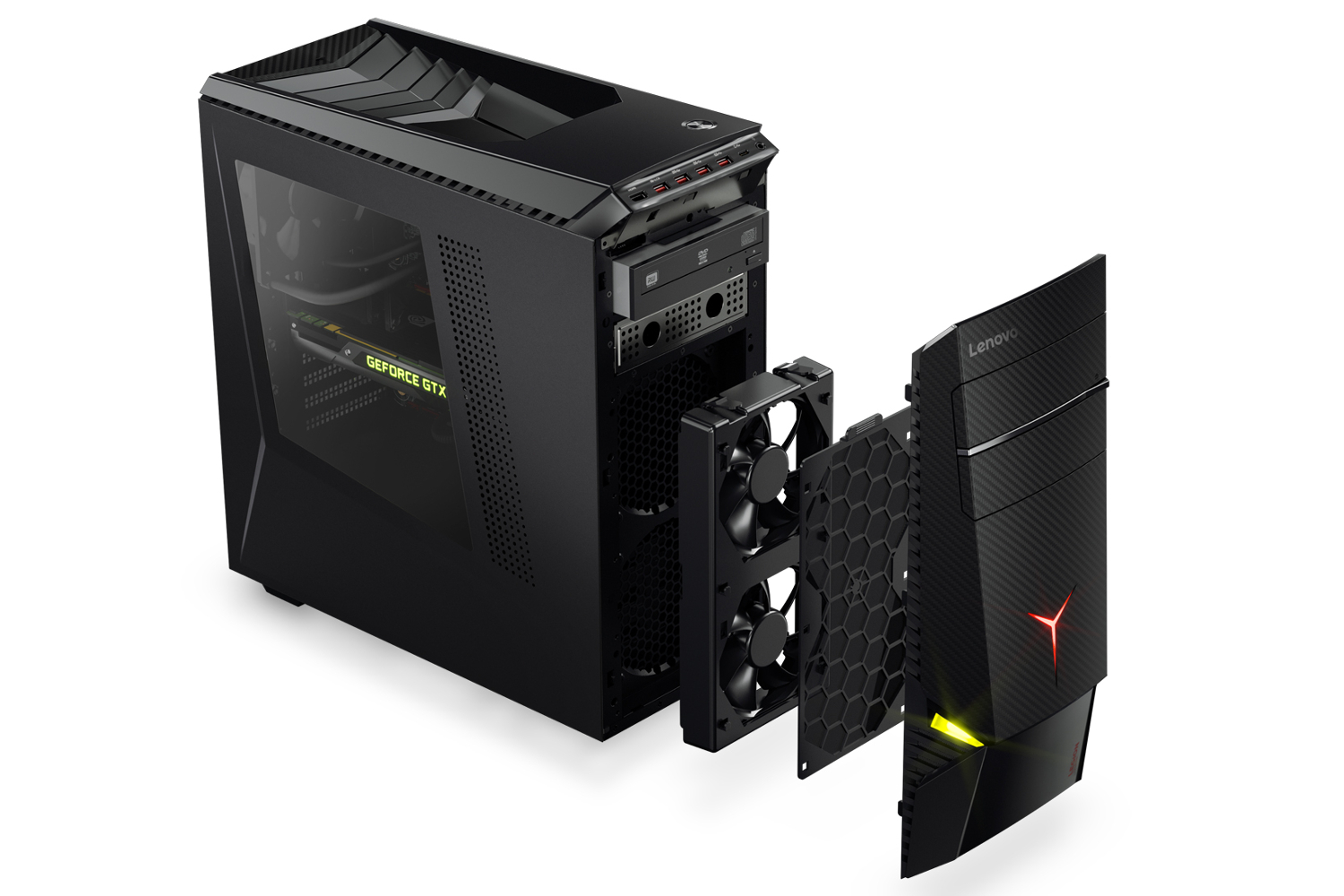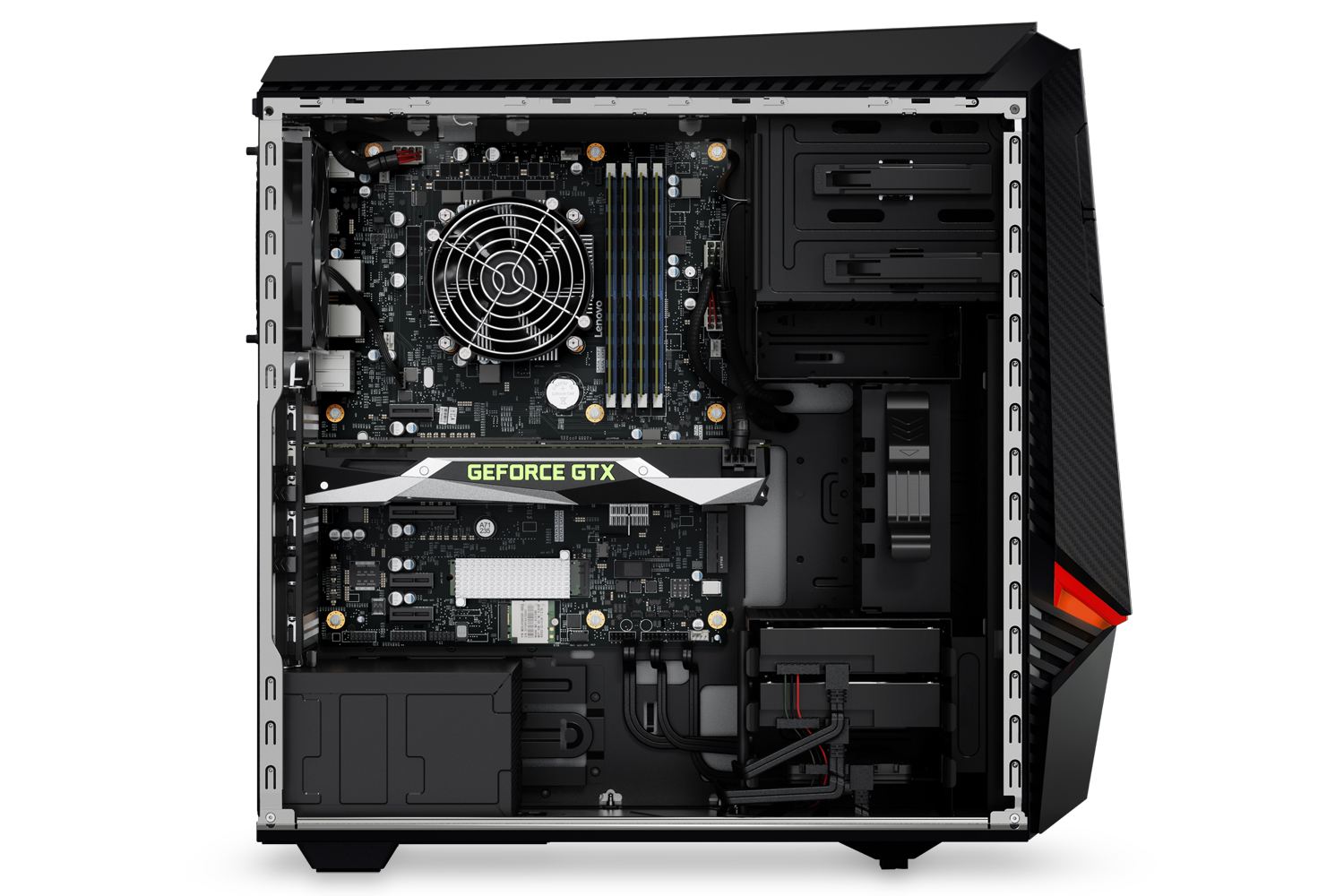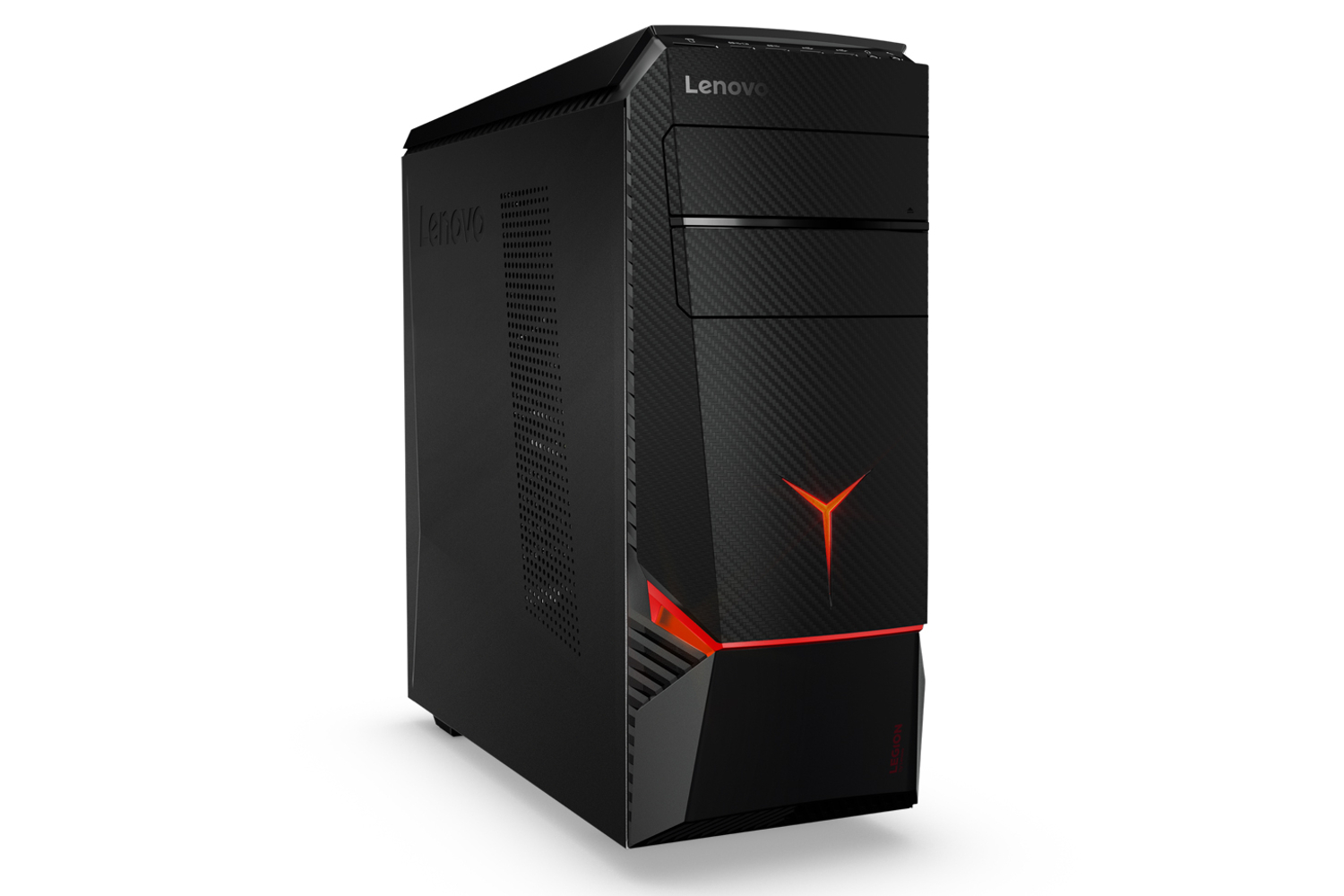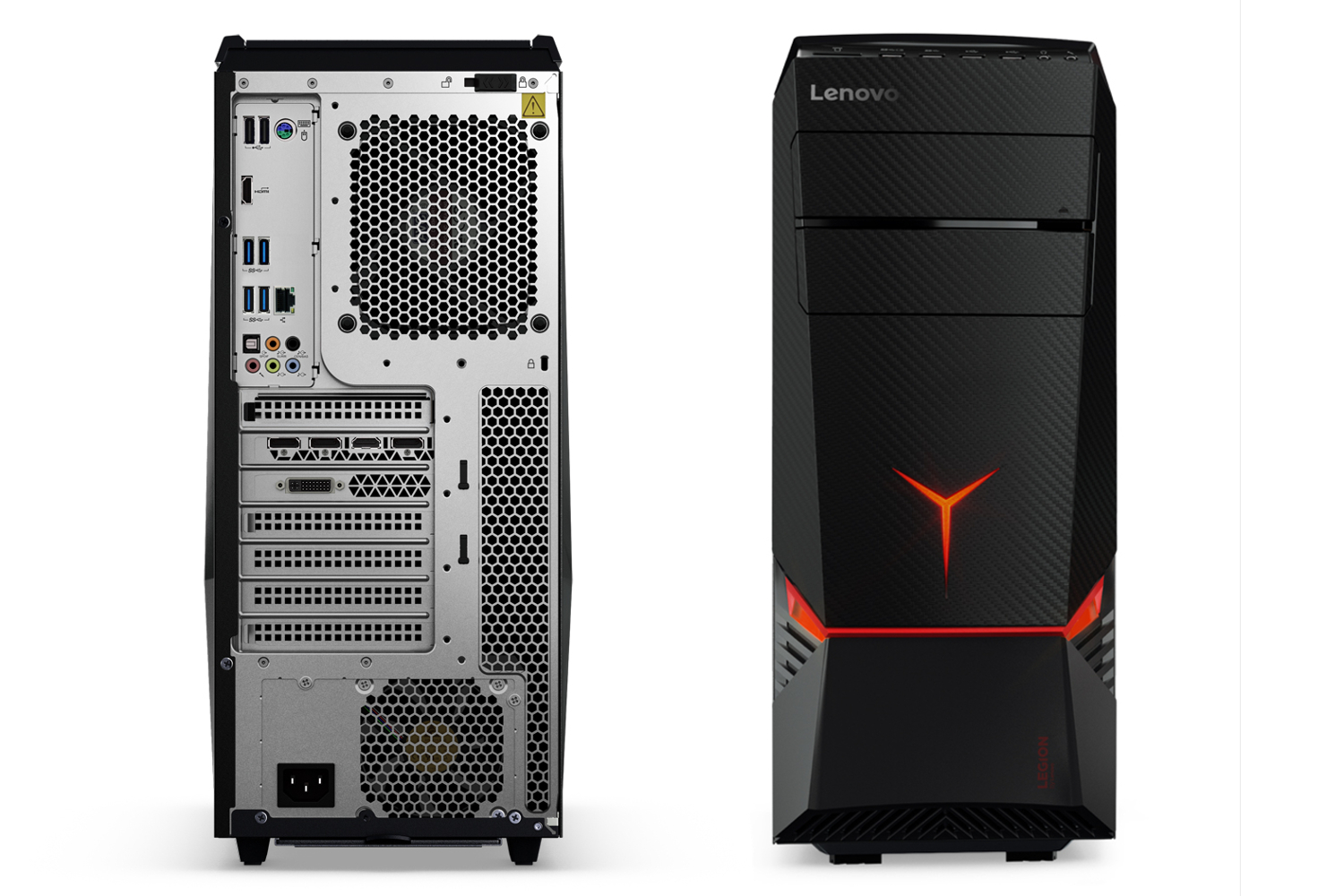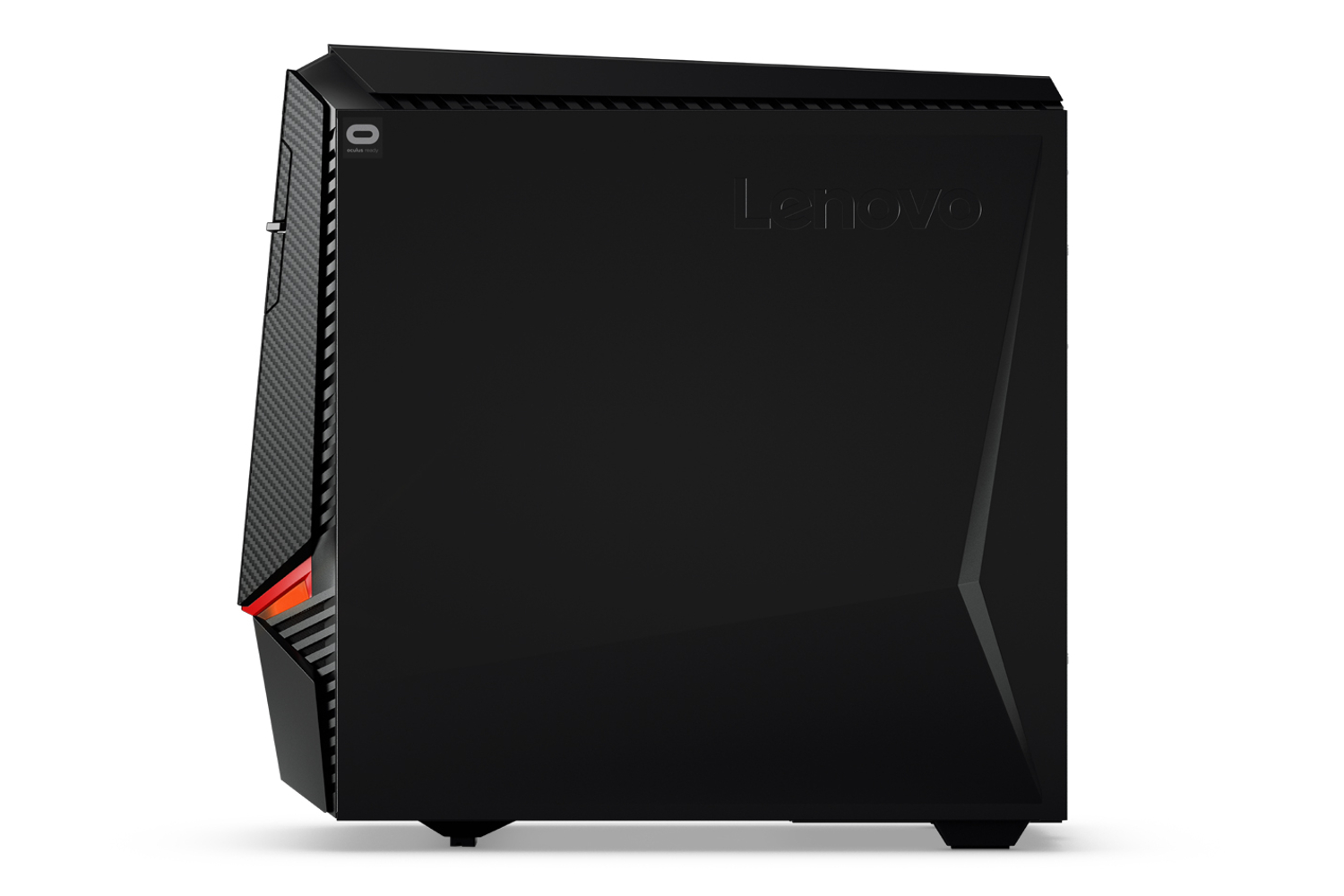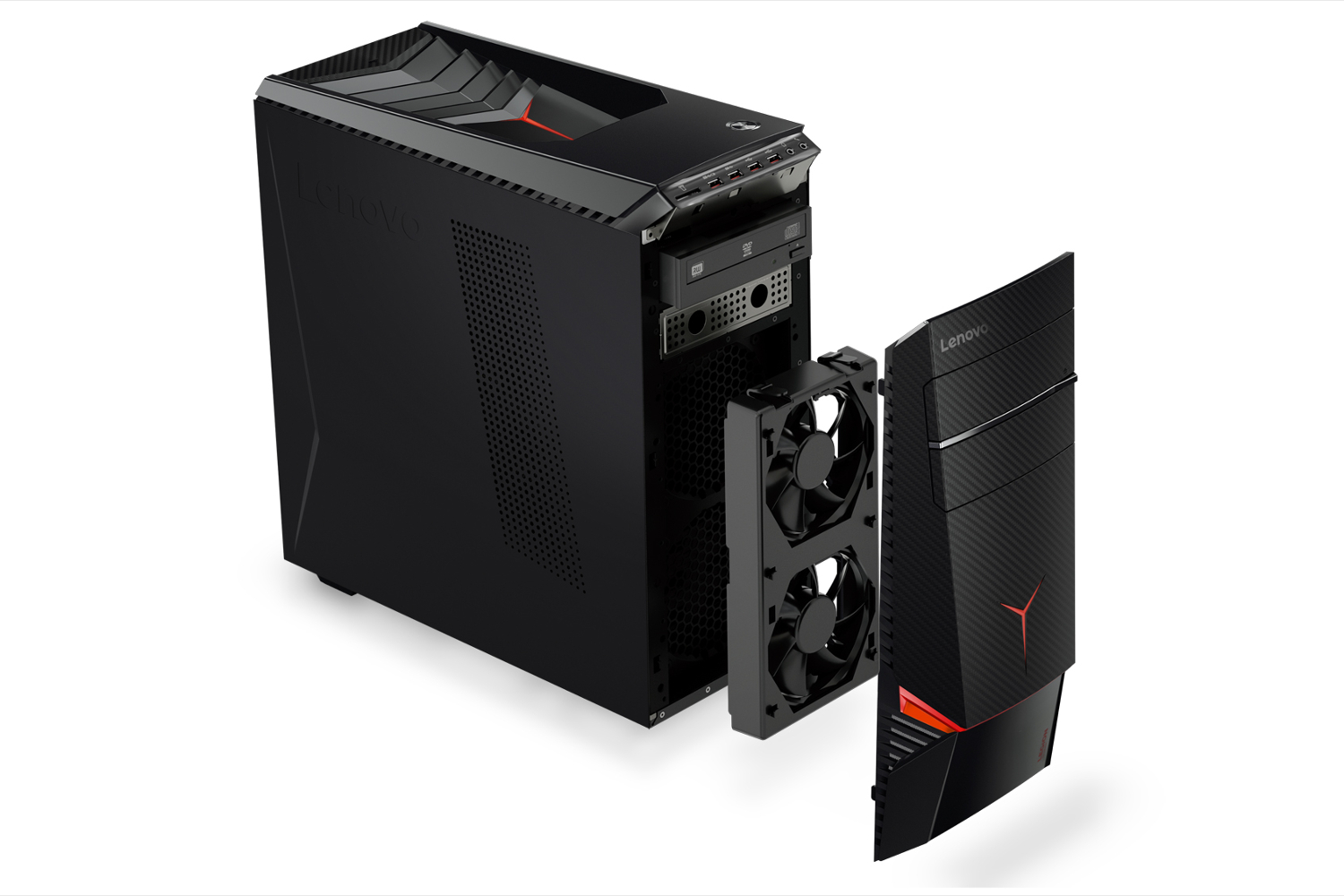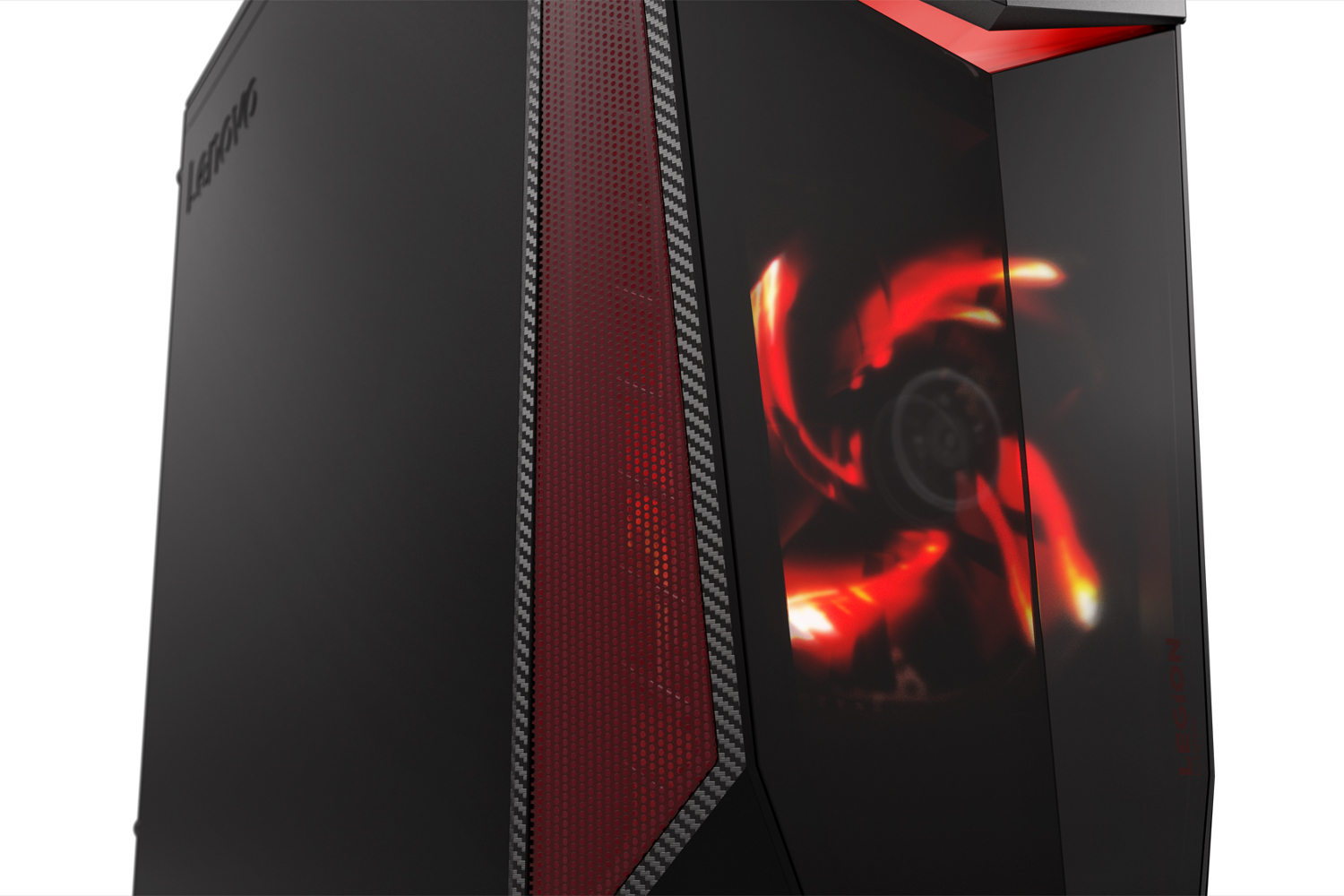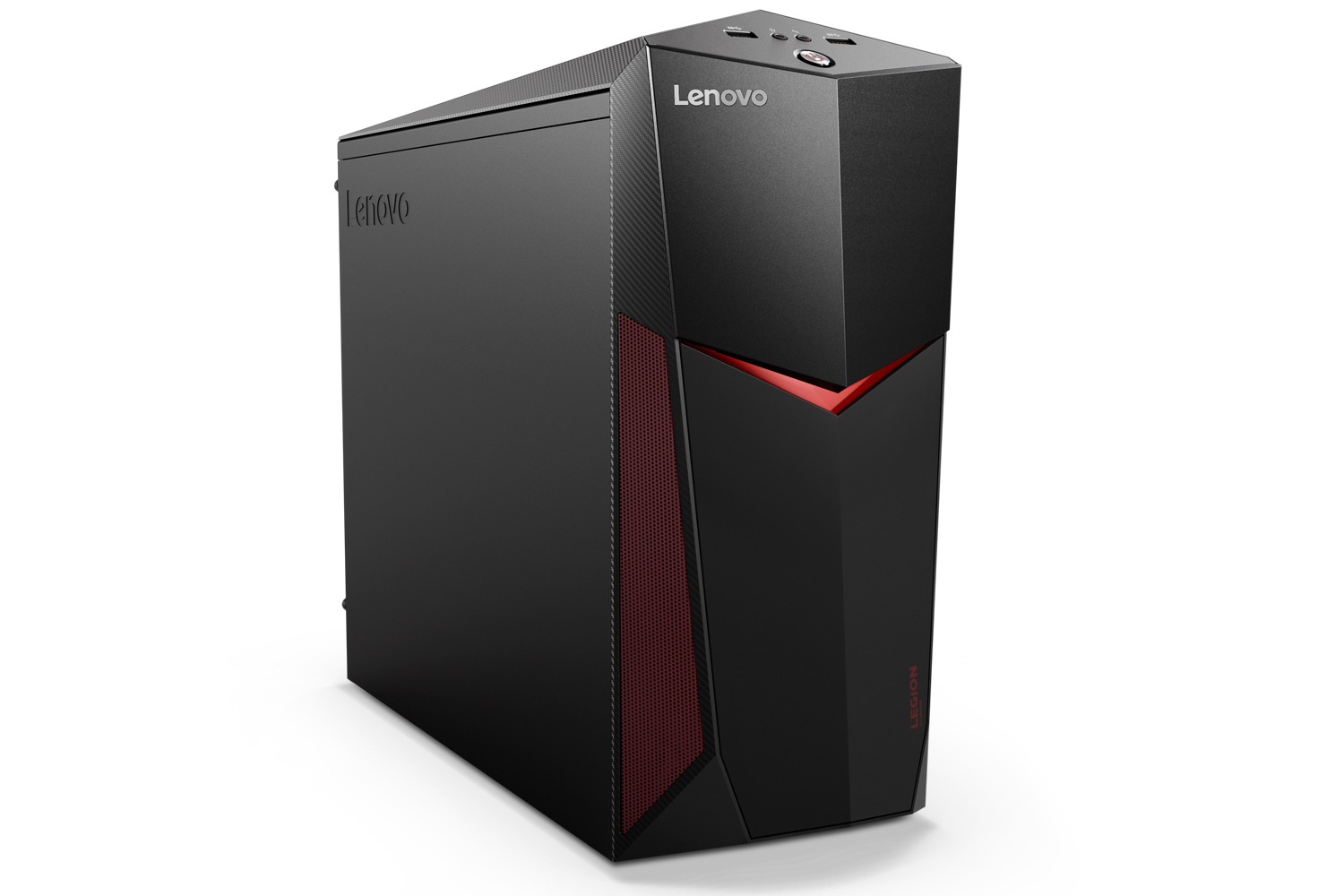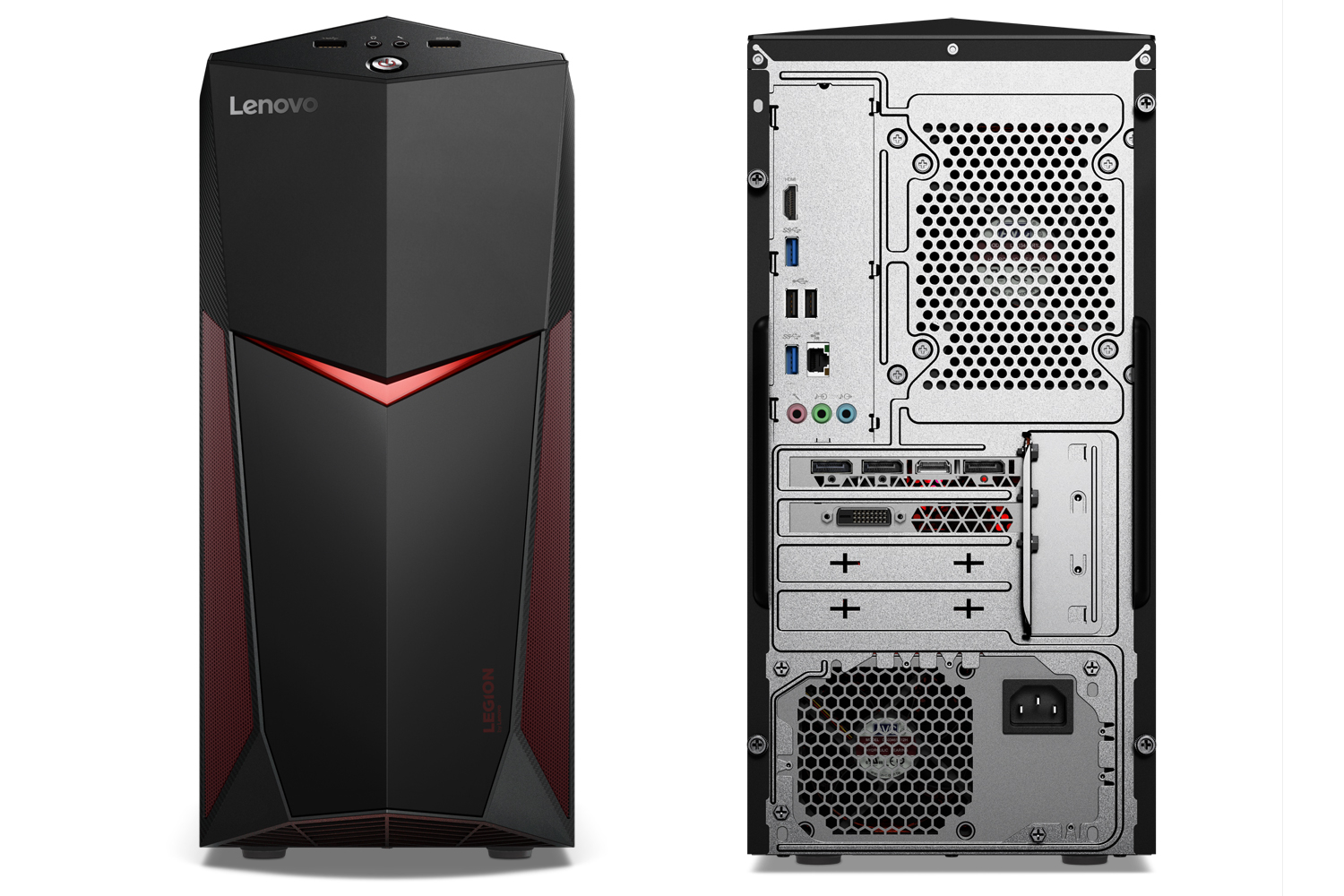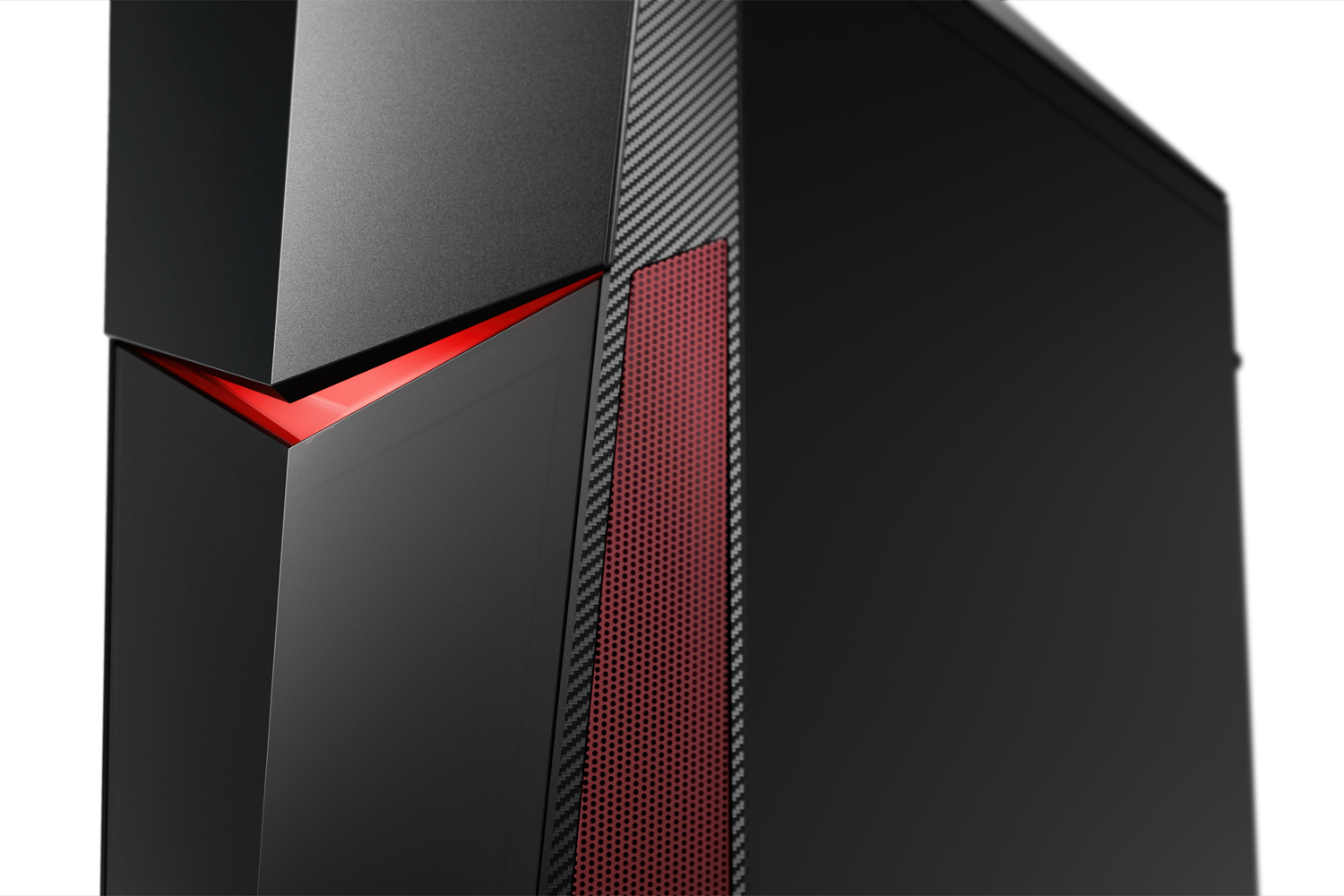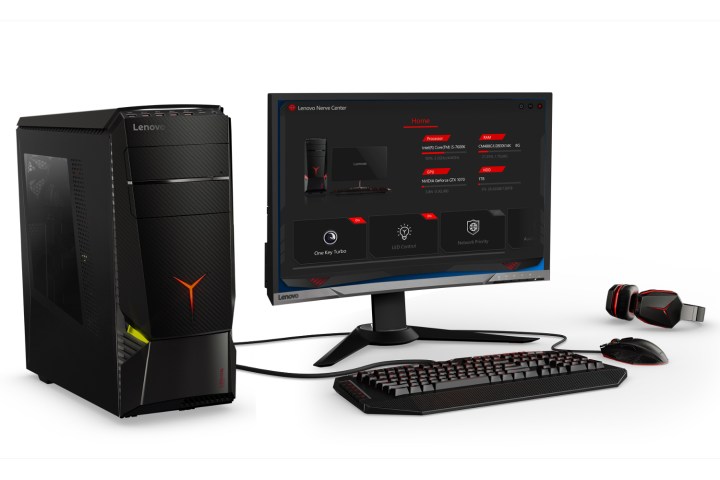
As you will see, all three are fine-tuned for the Oculus Rift headset although you should not have any problems using the HTC Vive either. There are plenty of ports to support both and the lower graphics card options should provide the 90 frames per second you need for barf-free virtual experiences. Unfortunately, Lenovo’s new desktops only include AMD’s Radeon RX 500 Series cards and not its two new Radeon RX Vega 64 and Vega 56 cards that just hit the market.
Lenovo Legion Y920
According to Lenovo, the Legion Y920 model targets the enthusiast gaming crowd with components like the GeForce GTX 1080, Intel’s Core i7-7700K processor, Dolby Atmos audio, speedy PCI Express-based solid-state drive storage, and overclockable memory. The Legion Y920 model is the only desktop of the three that provides options for Windows 10 Pro and Windows 10 Home.
For cooling, this model includes a single exhaust fan on the back. The power supply has an exhaust fan on the back too along with a filtered intake vent on the bottom of the machine. There are two intake fans under a filter behind the front panel and an intake fan under the top’s hood. This is the only model with a clear window and a vent on the left side and the only one with Thunderbolt 3 connectivity.
| Product Number: | Y920-34IKZ |
| Processor: | Intel Core i7-7700K (4-core) Intel Core i5-7600K (4-core) |
| Graphics: | GeForce GTX 1080 GeForce GTX 1070 GeForce GTX 1060 Radeon RX 580 |
| Memory: | Up to 64GB DDR4 Optional 16GB Intel Optane |
| Storage 1: | Up to 2x 512GB PCIe SSD |
| Storage 2: | Up to 1x 4TB SATA HDD |
| Connectivity: | Wireless AC (Up to 867Mbps) |
| Ports: | 1x Thunderbolt 3 2x HDMI 1x USB 3.1 Gen2 Type-C 8x USB 3.1 Gen1 Type-A 2x USB 2.0 1x Headset Combo Audio Jack 1x Gigabit Ethernet 1x PS/2 6x Audio Ports w/ S/PDIF |
| Audio: | Dolby Atmos |
| Dimensions (inches): | 16.92 (D) x 16.45 (H) x 7.48 (L) |
| Weight: | 23.14 pounds |
| Operating System: | Windows 10 Pro Windows 10 Home |
| VR Compatibility: | Oculus Rift (Certified) |
| Hero Features: | Windows Mixed Reality |
| Case Color: | Onyx Black |
| Starting Price: | $2,000 |
| Availability: | October 2017 |
Lenovo Legion Y720
This model is not quite as “elite” as the Y920, targeting the mainstream PC gamer with up to a GeForce GTX 1070 card, and no Thunderbolt 3 port. Its storage capacity is lower too, removing an SSD and shoving the current SSD over to the slower SATA connection. The hard drive has a lower capacity too, but the Y720 still retains the option for installing a 16GB Intel Optane “cache stick” to speed up the hard drive’s performance.
On the cooling front, this model has an exhaust fan on the back. The power supply has an exhaust fan too, and an intake vent on the bottom of the PC. There are two intake fans under a filter behind the front cover and one intake fan under the top’s hood. A vent resides on the left side but with no window to see all the pretty components inside.
| Product Number: | Y720-34IKH |
| Processor: | Intel Core i7-7700 (4-core) Intel Core i5-7400 (4-core) |
| Graphics: | GeForce GTX 1070 GeForce GTX 1060 GeForce GTX 1050Ti Radeon RX 570 |
| Memory: | Up to 64GB DDR4 Optional 16GB Intel Optane |
| Storage 1: | Up to 1x 512GB SATA SSD |
| Storage 2: | Up to 1x 2TB SATA HDD |
| Connectivity: | Wireless AC (Up to 867Mbps) |
| Ports: | 6x USB 3.1 Gen1 Type-A 4x USB 2.0 Type-A 1x Microphone Jack 1x Headphone Jack 1x HDMI 1x Gigabit Ethernet 1x PS/2 6x Audio Ports w/S/PDIF 1x 7-in-1 Card Reader |
| Audio: | Dolby Audio Premium |
| Dimensions (inches): | 16.92 (D) x 16.45 (H) x 7.48 (L) |
| Weight: | 23.14 pounds |
| Operating System: | Windows 10 Home |
| VR Compatibility: | Oculus Rift (Certified) |
| Hero Features: | Windows Mixed Reality |
| Case Color: | Onyx Black |
| Starting Price: | $1,000 |
| Availability: | October 2017 |
Lenovo Legion Y520
Finally, we have the Y520 specifically targeting console gamers wanting to “dip their toes” into the pools of PC gaming. It is the only one in the trio offering a seventh-generation Core i3 processor, and Wireless AC connectivity reaching only up to 433Mbps (1×1). It is still capable of running the Oculus Rift and HTC Vive, but you will have a better experience by grabbing the GTX 1060 graphics option.
As for cooling, this desktop includes the main and power supply exhaust fans on the back, and one LED intake fan mounted under the front panel. There are no vents or windows on the sides, and apparently no intake fan on the top, either.
| Product Number: | Y520T-25IKL |
| Processor: | Intel Core i7-7700 (4-core) Intel Core i3-7100 (2-core) |
| Graphics: | GeForce GTX 1060 GeForce GTX 1050 Ti Radeon RX 560 |
| Memory: | Up to 16GB DDR4 |
| Storage 1: | Up to 1x 128GB PCIe SSD |
| Storage 2: | Up to 1x 2TB HDD |
| Connectivity: | Wireless AC (Up to 433Mbps) |
| Ports: | 4x USB 3.1 Gen1 Type-A 2x USB 2.0 Type-A 1x Microphone Jack 1x Headphone Jack 1x HDMI 1x Gigabit Ethernet |
| Audio: | Dolby Audio Premium |
| Dimensions (inches): | 18.41 (D) x 15.84 (H) x 7.16 (L) |
| Weight: | 33.73 pounds |
| Operating System: | Windows 10 Home |
| VR Compatibility: | Oculus Rift (Certified) |
| Hero Features: | Windows Mixed Reality |
| Case Color: | Onyx Black |
| Starting Price: | $900 |
| Availability: | October 2017 |
Finally, we want to note that the specifications of all three list Windows Mixed Reality as a Microsoft “Hero” feature. This is an internal term used by Microsoft and original equipment manufacturers for specific Windows 10 features, such as special hardware supporting Cortana, hardware supporting Windows Hello, and so on. What this essentially means is that the towers can not only optimally handle the Oculus Rift, but upcoming headsets based on Microsoft’s Windows Mixed Reality platform in Windows 10, which also require VR-capable components.
Lenovo’s three new Legion desktops will arrive sometime in October for a starting price of $900.
Editors' Recommendations
- Lenovo just made my favorite gaming laptop even better
- The best Lenovo gaming laptops you can buy right now
- This new gaming laptop might have water cooling and an RTX 4090
- PC Game Pass will leverage GeForce Now in the coming months
- Intel’s upcoming iGPU might destroy both Nvidia and Apple M2
